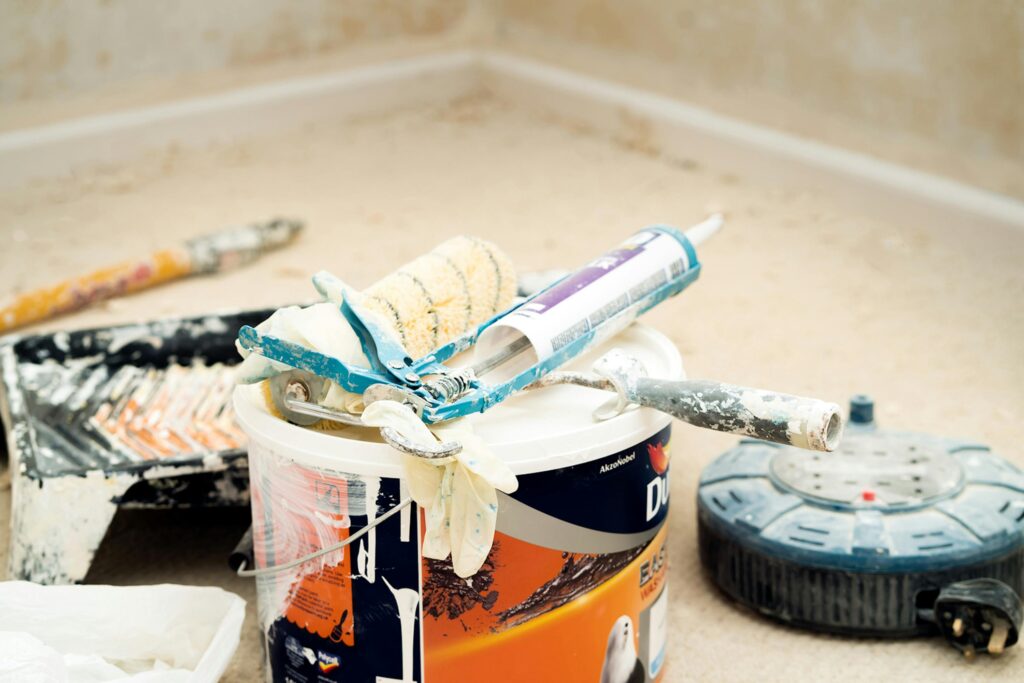Whether you are looking to freshen up your living room or protecting your home’s exterior, understanding the difference between interior and exterior paint is critical. These two types of paint are formulated for distinct environments, and using the wrong one could lead to peeling, fading, or even health issues. Let’s explore what makes interior and exterior paint unique and how to make the right choice for your next painting project.
What is Interior Paint?
Interior paints are generally designed for indoor use. These paints are used to handle minimal exposure to moisture, UV light, and temperature shifts. When painting your interior walls, it’s essential to use a product that offers durability, smooth finishes, and the ability to resist stains. One major benefit of interior paints is that they contain low levels of volatile organic compounds, which makes them safer for your indoor air quality.
Most of the interior paints are water-based paints, like latex paint, which makes them easier to clean with soap and water. Also, it provides smooth application on interior surfaces, and you can choose from various gloss levels, ranging from matte to semi-gloss, depending on the room’s function. On the other hand, interior paints aren’t built to withstand outdoor conditions such as rain, extreme temperatures, or direct sunlight. Applying interior paint to exterior surfaces will lead to fading and peeling of the surface and it is unsuitable for outdoor use.
What is Exterior Paint?
Exterior paints are build to handle harsh outdoor conditions. It contains stronger binding resins and rigid resins, which allow them to resist peeling, cracking, and fading, even in extreme temperatures. These paints are also formulated with added UV resistance and it helps them withstand direct sunlight without fading.
Exterior paints inside the home, however, aren’t a great idea. They contain higher levels of VOCs and chemicals designed for outdoor durability, making them potentially harmful to breathe indoors. Also, oil-based paints and acrylic paints used for exterior applications can be too harsh for enclosed spaces like living rooms and bedrooms.
Key Differences Between Exterior and Interior Paint
Interior and exterior paints differ primarily in durability, composition, and resistance to environmental factors. Interior paint is designed for aesthetic appeal, smooth finish, and easy maintenance, with lower VOC levels for indoor air quality. It is not formulated to withstand direct sunlight, moisture, or extreme temperature changes, making it unsuitable for outdoor use. On the other hand, exterior paint is built for toughness, with high weather resistance, UV protection, and mildew-resistant additives that allow it to endure harsh outdoor conditions.
Another key difference is flexibility. Exterior paint is made to expand and contract with temperature fluctuations, reducing cracking and peeling. It also has a higher fade resistance, ensuring colors remain vibrant despite prolonged exposure to sunlight. Conversely, interior paint offers a more rigid and washable surface ideal for homes and offices but lacks the resilience needed for exterior surfaces. These distinctions make it essential to choose the right type of paint based on where and how it will be used.
Choosing the Right Paint for Your Needs
Selecting the right paint isn’t just about color; it’s about durability, functionality, and where it will be applied. Here’s how to make the right choice:
- For cozy interiors: Use interior paint that provides a smooth, washable finish perfect for bedrooms, living rooms, and kitchens.
- For harsh outdoor conditions: Opt for exterior paint with weather-resistant properties to protect against rain, sun, and humidity.
- For bathrooms and basements: Choose interior semi-gloss or satin finishes with moisture and mildew resistance.
- For long-lasting beauty: Consider premium-quality paints with advanced technology that offer better coverage and longer life.
Picking the right paint ensures not only aesthetic appeal but also longevity, protection, and ease of maintenance for your home or business.


